Vipassana Centers

Dhamma Manorama, meaning ‘Pleasant Delightful Environment of Dhamma’, is on the west bank of Toe river, the tributary of River Ayeyarwaddy in MaUBin Township, 46 miles north-west of Yangon and situated on the corner of 3rd Street and Yangon-MaUBin highway road. It is also 3/8 miles away from MaUBin jetty. Two storied building (42'x80') consists of Dhamma Hall on the upper floor and dormitory for male and female student in the ground floor. The dinning room (30'x50') and kitchen (20'x20') are also provided beside the main building.
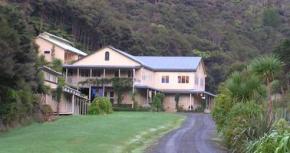
Dhamma Medini, meaning 'Ground of Dhamma', is located in Makarau valley, north of Kaukapakapa, within an hour's drive northwest of Auckland. Established in February 1987, the centre is situated on 137-acres of land on a grassy valley covered in native bush and inhabited by native birds. The centre facilities include 68 single rooms and a Dhamma hall that seats 100 students.
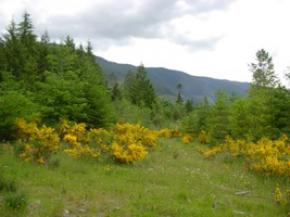
Vancouver Island is a large island off the west coast of British Columbia, north of Seattle and west of Vancouver. After much searching, a lovely 137 acre property was purchased in July, 2006 in the Cowichan Valley. Our teacher, S. N. Goenka, named the site "Dhamma Modana". In the Pali language spoken by the Buddha, this means "Joy of Dhamma". The property is located within walking distance of the Town of Lake Cowichan which is a 20 minutes drive from Duncan, B.C.
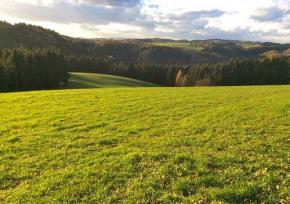
The Austrian Vipassana Trust has been established in 2008 in order to serve the growing demand for Vipassana courses in Austria. From 2008 till 2010 three courses could be organized annually at rented sites with capacities of up to 150 persons. In 2011 and 2012 four courses have been held and even five courseshave been scheduled for 2013 and 2014.
The long term perspective is to establish an Austrian meditation centre, dedicated solely to running Vipassana Meditation Courses. A site has been bought. Planning, design and funding are already in progress.

Dhamma Muttā, which means the “Pearl of Dhamma”, is a new permanent centre built in Tung Wan, South Lantau Island of Hong Kong. Close to Shek Pik Reservoir and adjacent to Mok Law Shui Wah School, it is 22 kilometers away from the HK international airport. The site is secluded from the city but yet convenient to reach to by public transport. It takes about 45 minutes by bus to get to the nearest city (Tung Chung). Currently, the completed Phase 1 can accommodate 24 students in a single gender. Phase 2 is currently under construction, and it will accomodate up to 80 students when it is ready in 2017.
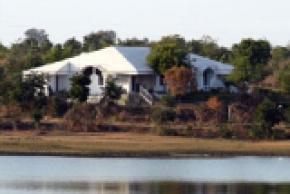
Dhamma Nāga, meaning 'Dhamma among Nāgas' (Nāgas: residents of the area, Nāga is an epithet for Buddha, symbolizing strength), was established in 1997 approximately 20kms from the central Indian city of Nagpur, near the village of Mahurzari on Katol Road . Developed on 20 acres of quiet and serene land on the bank of a small lake, the centre accommodates about 100 students.
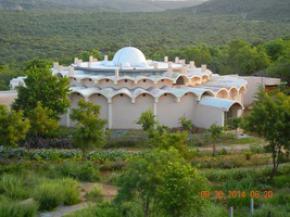
The Indian government is developing a Buddha Park on 285 acres of land in Nagarjuna Sagar. In July 2004 on one side of their project on the edge of the hill they allocated 35 acres of land for the development of a Vipassana center. Goenkaji has named this centre Dhamma Nāgājjuna after the great scholar Acharya Nagarjuna who was the chief abbot of Nalanda University. The centre enjoys a beautiful view of the reservoir and the surrounding hills. Dhamma Nāgājjuna is 160 kms from Hyderabad. From Hyderabad one can go by car (2.5 hour journey) or bus (3.5 hour journey).
By feb 2005, a Mini Dhamma Hall to seat 50 to 70 students, Office, Kitchen, Male and Female dormitory and toilets were constructed. The first 10 day course was held here in August 2005 after an additional dormitory and two single rooms with attached toilets were constructed on both sides. In 2006 construction started in the main course area. Since the environment here is ideal for long courses, it was decided to build individual rooms of 10’x10’ each having its own veranda and toilet. 18 such rooms were built of which 12 were used for males and 6 for females. A circular Mini Dhamma Hall for 50 students was also built by July 2007 and the first 10 day course was held here. Later 6 more rooms were added to the female side. A Pagoda with 64 cells was constructed in 2010 and it can be extended up to 200 cells. In 2014 twenty new rooms were constructed on the male side. The rooms are big enough to accommodate 2 people so 86 students can be accommodated. Every month two 10 day courses are conducted and Childrens’ courses on the last day of 10 day courses, teenagers courses, Satipattana courses and 10 day special are held. The first 20 day course was held in 2011. The first 30 day course was held on 30th of April 2014. The first 45 day course was held in January, 2015.
Developments:
Now in its second decade Dhamma Nāgājjuna has been evolving to meet the growing demand of students who want to attend courses. The completion of Kitchen, Dining Hall and Pagoda is a major accomplishment. These 3 projects have costed the center around 1.5 crores. Huge plantation has taken place in the first decade and now the trees stand tall having grown enough to give the barren land a vibrant lush-green look. Trees of Neem, Lemon, Amla, Mango and Kanuga trees occupy the garden. The garden is producing enough lemon and amla for the students.
Recent additions include Solar Water Heaters, Wood Stove and a Bio Gas plant to utilise the fire wood and food waste.
The Indian government is developing a Buddha Park on 285 acres of land in Nagarjuna Sagar. In July 2004 on one side of their project on the edge of the hill they allocated 35 acres of land for the development of a Vipassana center. Goenkaji has named this centre Dhamma Nāgājjuna after the great scholar Acharya Nagarjuna who was the chief abbot of Nalanda University. The centre enjoys a beautiful view of the reservoir and the surrounding hills. Dhamma Nāgājjuna is 160 kms from Hyderabad. From Hyderabad one can go by car (2.5 hour journey) or bus (3.5 hour journey).
By feb 2005, a Mini Dhamma Hall to seat 50 to 70 students, Office, Kitchen, Male and Female dormitory and toilets were constructed. The first 10 day course was held here in August 2005 after an additional dormitory and two single rooms with attached toilets were constructed on both sides. In 2006 construction started in the main course area. Since the environment here is ideal for long courses, it was decided to build individual rooms of 10’x10’ each having its own veranda and toilet. 18 such rooms were built of which 12 were used for males and 6 for females. A circular Mini Dhamma Hall for 50 students was also built by July 2007 and the first 10 day course was held here. Later 6 more rooms were added to the female side. A Pagoda with 64 cells was constructed in 2010 and it can be extended up to 200 cells. In 2014 twenty new rooms were constructed on the male side. The rooms are big enough to accommodate 2 people so 86 students can be accommodated. Every month two 10 day courses are conducted and Childrens’ courses on the last day of 10 day courses, teenagers courses, Satipattana courses and 10 day special are held. The first 20 day course was held in 2011. The first 30 day course was held on 30th of April 2014. The first 45 day course was held in January, 2015.
Developments:
Now in its second decade Dhamma Nāgājjuna has been evolving to meet the growing demand of students who want to attend courses. The completion of Kitchen, Dining Hall and Pagoda is a major accomplishment. These 3 projects have costed the center around 1.5 crores. Huge plantation has taken place in the first decade and now the trees stand tall having grown enough to give the barren land a vibrant lush-green look. Trees of Neem, Lemon, Amla, Mango and Kanuga trees occupy the garden. The garden is producing enough lemon and amla for the students.
Recent additions include Solar Water Heaters, Wood Stove and a Bio Gas plant to utilise the fire wood and food waste.
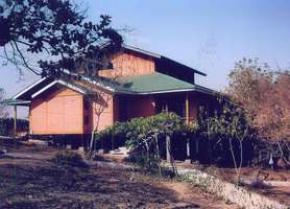
Dhamma Nanadhaja, meaning ‘Flying Flag of Wisdom in Dhamma’ (named after Ledi Sayadaw), will be situated on The Shwe Taung Oo Hill, on the west bank of Chindwin River, seven miles away from Monywa, Yinmabin Township, Monywa District, Sagaing Division, near the Chindwin Bridge. There is a cave on that hill where Ledi Sayadaw, practiced Vipasasna and wrote the Manuals of Dhamma. At present Ledi Sayadaw's statue is located there and seems to be benevolently looking down where the Centre is to be constructed. In 2004, the local government had granted six acres to establish this Vipassana centre. Since 1996, off-centre courses had been held in Dhamma Yeik hall, Su Taung Pyae Pogada, in Monywa. Provisional accomodation for 50-male and 100-female students is set. Guruji SNGoenka first visit the center in Jan 2000 and second in Jan 2003.
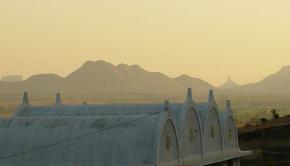
Dhamma Nāsikā, meaning 'Nose of Dhamma,' is situated on a secluded plot of land given by the Municipal Corporation of Nashik. The 17-acre triangular plot, about one-hour drive from Dhamma Giri, is on a high piece of land and protected on all sides. Away from the hustle and bustle of the city, Dhamma Nāsikā is yet within convenient distance of Nashik city. On all sides one can see the mountains of Sahyadri. The centre overlooks Nashik city. Gangapur Dam is about three kilometers away.
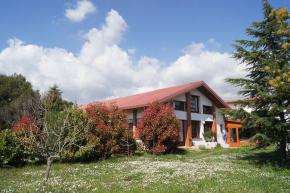
Dhamma Neru, meaning ‘High Mountain of Dhamma’, is the first Vipassana centre in Spain. The
property, purchased in June 1999, is near Palautordera, about 35 miles northwest of the vibrant
city of Barcelona and a similar distance southeast of historic Girona, both of which have
international airports. The French border is just one hour’s drive away. The site is located
approximately 1,300 feet above sea level and is overlooked by the imposing mountains of
Montseny Natural Park (height of over 5,500 ft) and is snow-covered in the winter. Being only
30 minutes from the Mediterranean, the Centre enjoys a mostly mild climate.
A quadrangular building sits in the middle of the level four-acre property, surrounded by a high
hedge and an abundance of fruit and ornamental trees. Presently the Centre accommodates 63
students and servers, but planning permission is expected to be granted for expansion from the
present 7,000 sq feet of construction to about 38,000 sq feet. This will enable the provision of
full facilities for about 120 students, including cells, two Dhamma halls, new teachers’ residences
and kitchen and dining facilities.
The Centre is holding an average of 15 ten-day courses and one 20-day course - as well as several
short and young people’s courses - per year. In addition, there is a growing programme of noncentre
courses in five regional locations on the Spanish Peninsula and the Islands, where
additional seven 10-day courses are being held annually as well as several short courses.
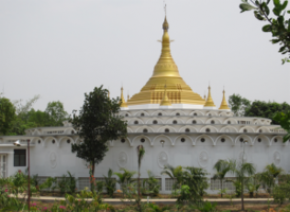
Dhamma Nidhi, meaning ‘Treasure of Dhamma’, is located in Inn-Ta-Kaw Town, Inn-dine District, Bago Division, near Dhamma Theik Pagoda. To be built on 18 acres of land, the master plan is presently being drafted. The facilities to be made available will be for short and long courses, with mostly single room accommodations, a Dhamma Hall and pagoda besides other regular facilities.
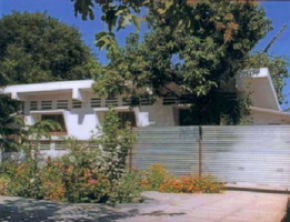
In 500 BC in South India, Nizamabad with 3 more districts was called Asaka country. A monk called Bavary from this place sent his 16 diciples to North India to learn Vippassana. From this place they spread Vippassana, in South India and South Eastern countries. Dhamma Nijjanna Centre is situated in Pocharam village, which is 13km from Nizamabad district in Andhra Pradesh, India. A non-centre course was conducted in Nizamabad town in 2001 May in a hostel building with 71 students. Seeing the response of the course an old student donated his residence with 1.2 acres land in Pocharam village and with the help of other old students, one-day courses were conducted every sunday for 2 years. During that period a Dhamma hall to seat 50 was constructed and the old residence was modified into male residences for 29 students. Female residences for 25 - seven 3 bedded rooms and two double rooms all with attached toilets, a mini hall for 25, one room each for male and female AT’s, 3 rooms for Dhamma Servers and separate dining halls with kitchen were also constructed. On 15/5/2003 the first 10 day course was conducted and since then one 10-day course, on the first Wednesday of the month, childrens courses on the ending day of the 10-day course, one teenager course and one Sattipattan course per year are being conducted. There is a plan to construct 12 single rooms with female teacher residence and shift the male students to the old female residences. There is also a plan to purchase land for the construction of the Pagoda and extension of the centre. As Nizamabad District is near the border of Maharashtra State many students come from there too. Nizamabad is around 180 kms from Hyderabad and it would take about 3 hours to get there. From Nizamabad it is 13km to Pocharam village. There are buses which go via the centre and the Devgiri express from Hyderabad to Mumabai goes via Nizamabad.
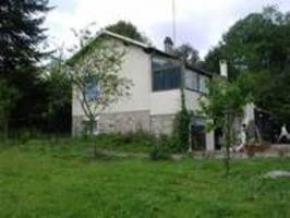
Dhamma Nilaya, meaning ‘House of Dhamma’, is run by the Khmer community in France
(Association Khmer Support Vipassana). It was a private house prior to purchase in May 1997. It
is situated in a quiet suburban area 55 kilometres to the east of Paris and as such it is quite
convenient for the large group of Cambodian and French meditators in the Paris region.
Although extending in area to about 5600 square meters, this is a small facility unable to
accommodate students staying overnight. It runs one-day and courses for children. From July
2005, two one-day courses a month catering for both Khmer and French speaking students will
be held. Dhamma Nilaya has a well-established programme of courses for children being served
by both Khmer speaking and French speaking children’s course teachers.
The Dhamma Hall accommodates up to 40 students and the kitchen and bathing facilities are
quite adequate for that number. It has nicely maintained grounds with mature trees and a pond. It
is a nice quiet retreat from the hustle and bustle of the metropolitan region of Paris and is much
valued by those who can spend time there.
